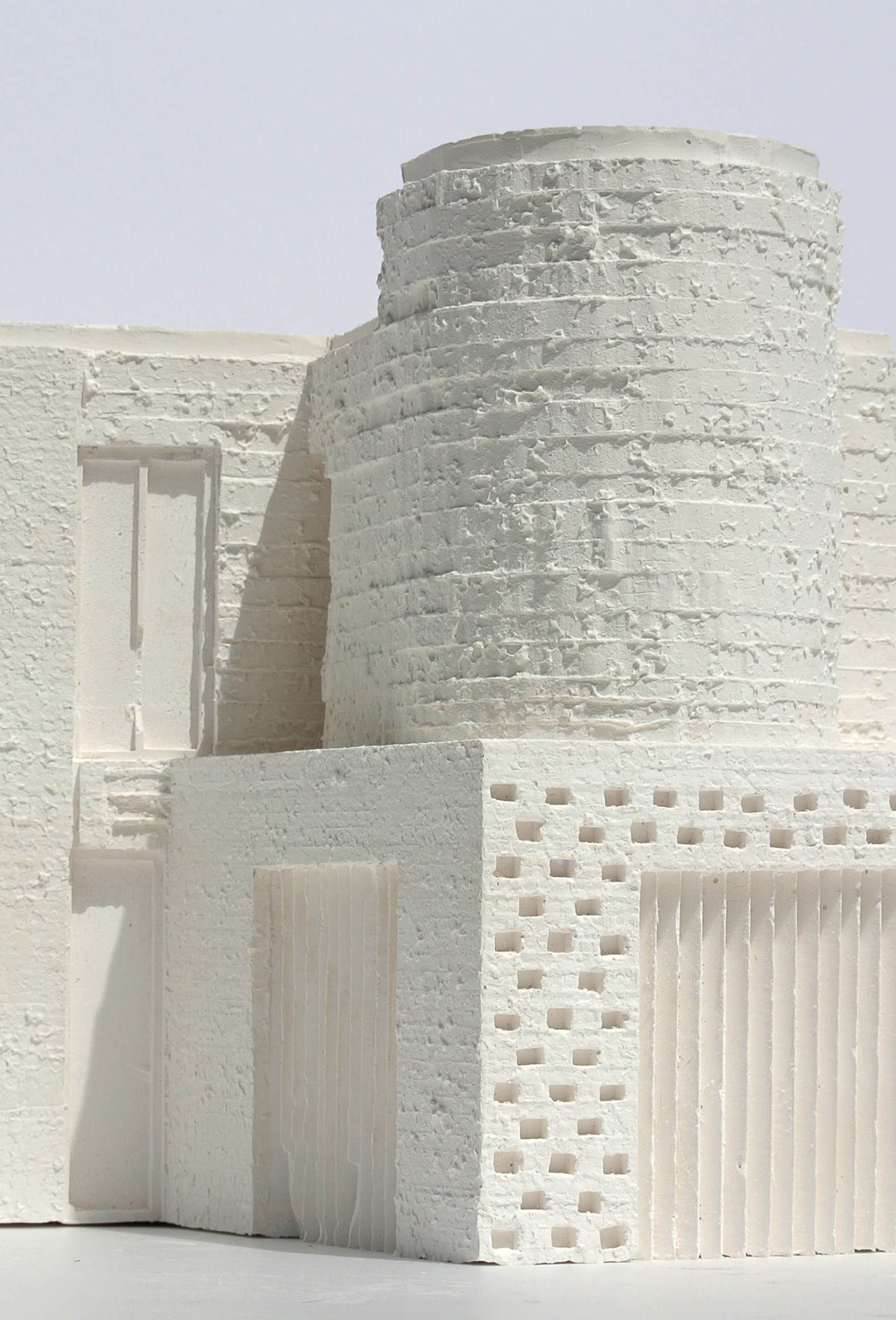Titus Lammertse
Architecture of the Interior

Kintsugi, the elephant and the blind men
Researching the values of the sense of touch
A School for Blinds and Visual Impaired, a Neighborhood Center and a Music School
The Japanese technique of Kintsugi, in which broken porcelain is repaired with gold, is the starting point of the design. The seams of gold unite the old shards giving it a new value, uniting old and new, the worthless and the valuable. The head structures of two old buildings form the old ‘shards’ to which the ‘shards’ of the new architecture are added.
The new additions don’t follow always the boundaries of the old buildings, they form a variety of structures giving the idea of a labyrinth. By having architectural elements within arm length the blind are helped in finding their way. Special attention is paid to different tactile qualities to enhance the recognizability of the spaces. Touch (not vision) is the dominant sense behind the plan. The different surfaces are like the wrinkles of the elephant in Hokusai’s drawing which help the blind men in forming an image of the animal.